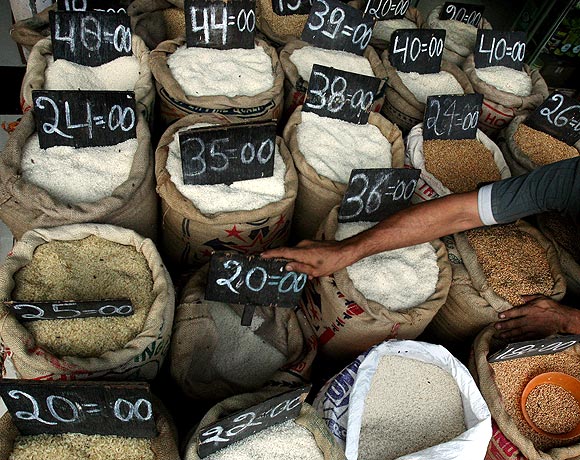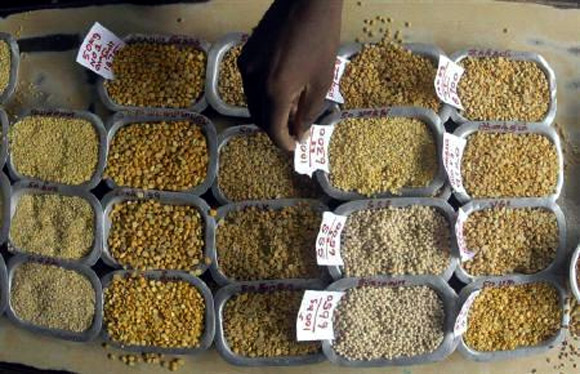 | « Back to article | Print this article |
Myths and reality of the Food Security Bill
All those who have been dismayed by the food security ordinance should thank Manmohan Singh and his colleagues for a neat optical trick, says T N Ninan.
Back in the 1980s, the government distributed an average of nearly 16 million tonnes of foodgrain each year through the public distribution system (PDS).
The 1990s saw an increase in the PDS throughput to just over 17 million tonnes. The striking change came in the decade of the “noughties”, which saw the annual figure climbing to around 20 million tonnes, then 30 million tonnes, and in the final years of the decade more than 40 million tonnes.
Now the figure is closer to 50 million tonnes. On a per capita basis, the grain made available through the PDS has doubled, from 20 kg per year in the 1990s to 40 kg now.
If the government supplying more grain to people were the solution to malnutrition, supposedly more widespread in India than in even sub-Saharan Africa, then we should have made a significant dent in the problem over the last decade.
Click NEXT to read more…
Myths and reality of the Food Security Bill
Sadly, the Global Hunger Index report says that India was one of just three countries where hunger actually increased between 1996 and 2011.
Every third malnourished child lives in India; and we have far more under-weight and stunted children than any other country.
So if you are looking for a positive correlation between the amount of grain supplied through the PDS and the extent of malnutrition and associated problems, there ain’t any.
That may be because much of the grain isn’t reaching the malnourished, as past government studies have discovered. Or the malnourishment problem is not fundamentally related to cereal intake, and the roots of the problem lie elsewhere (waterborne diseases, perhaps, or an unbalanced diet that does not have enough of vitamins, proteins and micronutrients).
Click NEXT to read more…
Myths and reality of the Food Security Bill
But if you stayed with the cereal argument, and assumed that half the 118 million cultivator families in the country would not buy PDS grain because they grow enough of their own, and the richest one-third of urban families don’t go anywhere near the PDS anyway, then the per capita availability of PDS grain for those belonging to the rest of the families would already be about 60 kg per year, or 5 kg per month.
Magically, that is no different from what the “food security” ordinance has given us: the promise of 5 kg of grain per head to two-thirds of the country’s population.
Why this should be considered a radical measure that will garner votes for the Congress is hard to figure out, especially since many states already offer grain at prices lower than what the ordinance stipulates.
Click NEXT to read more…
Myths and reality of the Food Security Bill
In fact, all those who have been dismayed by the food security ordinance, because they worry about its fiscal cost as well as the damage it could do to India’s agriculture, should thank Manmohan Singh and his colleagues for a neat optical trick.
Unusually for the prime minister, he stonewalled Sonia Gandhi and her advisers for many months, refusing to allow what they wanted: 7 kg of grain per head per month, for 1,200 million people (not 5 kg for 800 million).
In effect, the new law restricts the grain on offer to under a half of what the maximalists wanted; indeed, the total procurement required to sustain the proposed programme is only three-quarters of the already existing procurement levels.
Click NEXT to read more…
Myths and reality of the Food Security Bill
There may even be a positive pay-off: the intense debate generated in the run-up to the ordinance has focused attention on the many deficiencies of the PDS, with states like Chhattisgarh and Tamil Nadu having put substantial improvements in place. Others may follow.
There is even a new state-wise enumeration under way to decide who actually is poor.
For all one knows, therefore, better targeting and proper grain distribution might even improve nutrition levels!




